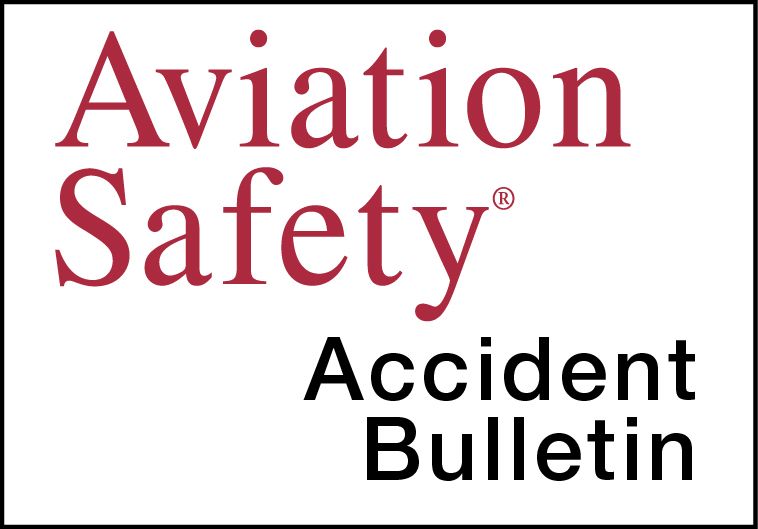AVweb’s General Aviation Accident Bulletin is taken from the pages of our sister publication, Aviation Safety magazine. All the reports listed here are preliminary and include only initial factual findings about crashes. You can learn more about the final probable cause on the NTSB’s website at www.ntsb.gov. Final reports appear about a year after the accident, although some take longer. Find out more about Aviation Safety at www.aviationsafetymagazine.com.
June 16, 2021, Goodland, Kan.
Beech U-8F Queen Air
The airplane was substantially damaged at 1905 Mountain time when its right wing caught fire during engine start. The pilot sustained minor injuries.
While starting the right engine, the pilot heard a loud bang and noticed the right wing was on fire. The pilot shut down the right engine with the mixture control and egressed the airplane. Examination revealed damage to the outboard 12 feet of the right wing. The outboard aft right wing fuel bladder was observed to be in a degraded condition, with indications of fire damage. Wiring for the navigation light had a conductor exposed in two locations.
June 17, 2021, Rush Valley, Utah
Piper PA-28-140 Cherokee 140
At about 2253 Mountain time, the airplane was destroyed when it apparently flew into terrain during controlled flight. The pilot and passenger were fatally injured. Visual night conditions prevailed.
While en route, the airplane began a meandering track skirting the Mode C veil to the west of Salt Lake City. At 2245, the radar target crossed over a mountain range at 8200 feet MSL, clearing terrain by about 400 feet vertically. The target then flew south over foothills where, at one point, it came within 100 feet vertically and horizontally of terrain. The last radar target was recorded at 2253:10 and depicted the airplane about ¾-mile short of a 10,330-foot-high peak, at 8200 feet and 98 knots.
June 18, 2021, Conway, Ark.
Cirrus SR20
The airplane was destroyed at about 1357 Central time after its pilot declared an emergency shortly after takeoff. The solo pilot sustained fatal injuries. Visual conditions prevailed.
Shortly after the airplane departed Runway 22, a witness heard its pilot declare an emergency with the intent to land on Runway 2. He observed the accident airplane make a left turn and overfly Runway 4 “crazy fast.” After flying the length of Runway 4, the airplane entered a steep left bank and spun, making one-and-a-half rotations before impacting the ground in a nose-low, inverted attitude. Examination revealed the pitot tube cover had not been removed.
June 21, 2021, Mercer, Tenn.
Cirrus SR22T
At about 0930 Eastern time, the airplane was substantially damaged in an off-field landing following engine failure. The solo pilot was fatally injured. Visual conditions prevailed. The flight operated on an IFR flight plan.
During en route climb, the pilot reported a manifold pressure issue and diverted to a nearby airport. The pilot did not declare an emergency. As the airplane descended below the minimum vectoring altitude, ATC suggested a closer runway but the pilot chose to continue to the original divert airport. The airplane continued to descend and, at 600 feet MSL, ATC asked the pilot if he “intended to use the parachute.” The pilot responded, “negative…busy landing.” No further communications were received from the pilot.
Examination revealed cracking and melting at the left turbocharger housing attachment flange. A small metal fragment was found wedged between the wastegate housing and the valve, forcing it open. The Cirrus Airframe Parachute System (CAPS) was found intact.
June 29, 2021, St. Augustine, Fla.
Cessna 152
The airplane was destroyed when it struck a displaced threshold at about 1427 Eastern time. The flight instructor and a passenger were fatally injured. Visual conditions prevailed for the “discovery” flight.
A witness observed the airplane approach Runway 13 at about 100 feet AGL. Its wings were moving up and down about one foot in each direction. The airplane appeared to be in a nose-up attitude before it pitched down about 45 degrees and impacted the surface. A fire engulfed the airplane as it slid about 200 feet before coming to rest.
June 30, 2021, Curtiss, Wis.
Earthstar Gull 2000 Experimental LSA
At about 0450 Central time, the airplane was substantially damaged when it collided with terrain shortly after takeoff. The solo, non-instrument-rated pilot was fatally injured. Instrument conditions prevailed.
At 0435, weather observed about 10 miles northeast of the accident site included calm wind, ¼-mile visibility in fog and 500 feet vertical visibility. At 0455, weather at that location had improved to five miles visibility in mist and clear skies. Civil twilight began at 0442; sunrise occurred at 0519.
This article originally appeared in the September 2021 issue of Aviation Safety magazine.
For more great content like this, subscribe to Aviation Safety!




































Were it not for the U-8F incident, you could retitle this page “Darwin Awards”
Sadly, I agree with your conclusion.
I wouldn’t count the chickens before they hatch!
I’m sure there’s someone who could find some thing to blame this on “pilot error”.
i.e. isn’t it the pilots responsibility to ensure that the aircraft is airworthy?
The quality of pilots flying the Cirrus seems unusually unskilled.
Dare I say, that once again, that the Cirrus is a strong contender, in this style of aviation reporting.. I most likely will be called out, again, that statistically the Cirrus is safer then any other airplane.. And yes, it is an extremely well designed airplane, captivating the attention of a much lesser pilot..